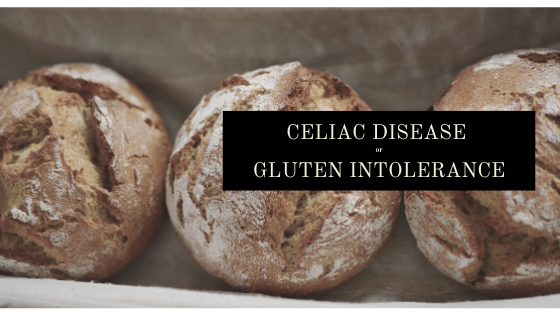There’s a lot of confusion about what the difference between Celiac disease and gluten intolerance is. My clients often ask me “I have the symptoms of both Celiac and gluten intolerance – how do I know which one I have?”. First and foremost, I want to say – I am not a doctor therefor I can’t diagnose you, nor is recommended to diagnose yourself. The only way to know which one you have is to be tested by your doctor. If you are concerned about having either gluten intolerance or Celiac disease, get help from a trusted doctor. Hopefully this post can help clear up some of your confusion.
What is Celiac Disease?
Celiac disease is an autoimmune disease where the body essentially attacks itself when you eat gluten. More specifically, the small intestine which can cause serious damage and trigger serious symptoms. There are over 300 reported symptoms of Celiac disease. From diarrhea to brain fog, it can impact many parts of the body. Some more commonly recognized symptoms of Celiac disease are:

Getting diagnosed with Celiac disease involves many tests. Every doctor is different but the gold standard is to be tested for inflammatory blood markers and then to confirm the diagnosis through an endoscopy of the small intestine.
The ONLY treatment right now for Celiac disease is a life-long gluten-free diet. Or in other words, a strict gluten-free lifestyle. This disease is lifelong and there are no other treatment options or cures at the moment.
What is Gluten Intolerance?
Gluten intolerance, also knows as non-Celiac gluten sensitivity, is when you don’t have Celiac or an allergy to the protein gluten, but find yourself reacting poorly to eating foods that contains gluten.
The symptoms of gluten intolerance are the same as the symptoms of Celiac disease aside from the characteristic small intestinal damage. The main difference is that those with Celiac have small intestinal damage and the majority of people with gluten intolerance don’t.
It is difficult for people to clinically separate gluten intolerance from IBS and there aren’t many good tests specifically designed for diagnosing gluten intolerance. Often, many people who have gluten intolerance are self-diagnosed or receive this diagnosis following negative test results for Celiac disease.
A gluten-free lifestyle is a treatment for gluten intolerance. Though it should be noted that sometimes food intolerances, like gluten intolerance, can be grown out of, unlike Celiac disease. So a gluten-free lifestyle is not always lifelong for people with gluten intolerance.
So, what’s the difference between Celiac Disease and Gluten Intolerance?
Since Celiac disease and gluten intolerance share so many symptoms, it can be hard to understand what the difference is – and ultimately, how to know which one you have.
Celiac disease always involves an autoimmune reaction and damage in the small intestine and Celiac disease is always lifelong. There is no cure and there is no growing out of it. This is different from gluten intolerance because in some cases, intolerance can be grown out of and foods can be reintroduced later on in life.
How do you know which one you have? Unfortunately, the only way know which one you have is to be tested for Celiac disease. Self-diagnosis is not an option. There is no way of knowing if you have Celiac or gluten intolerance without being tested. If you’re concerned you have either, talk to your doctor about it.

